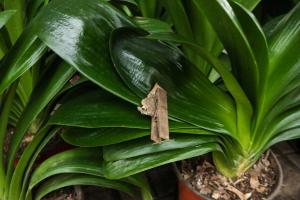Introduction
Dicot plants, also known as dicotyledonous or dicots, are a type of flowering plant that are characterized by having two seed leaves when they first sprout. This is in contrast to monocot plants, which only have one seed leaf. Dicot plants make up the majority of all flowering plants and are found in a variety of habitats around the world.
Characteristics of Dicot Plants
Dicot plants have several defining characteristics that set them apart from other types of plants. In addition to having two seed leaves, they typically have broad, flat leaves with branching veins that are arranged in a net-like pattern. Their flowers also often have four or five petals and are arranged in multiples of four or five. Additionally, dicot plants usually have a taproot system, which means that they have one main root that grows down vertically and is more robust than their secondary roots.
Examples of Dicot Plants
There are countless dicot plants around the world, ranging from small shrubs to towering trees. Some common examples of dicot plants include sunflowers, roses, oak trees, tomatoes, beans, and peas. In fact, most of the plants that we commonly refer to as "flowers" are actually dicot plants.
Importance of Dicot Plants
Dicot plants play an incredibly important role in ecosystems around the world. They are a primary source of food for humans and other animals, as many edible crops such as soybeans, peanuts, and almonds are dicots. Additionally, dicot plants provide important habitats for insects and other pollinators, which are critical for maintaining healthy ecosystems. Furthermore, many dicot plants have medicinal properties and are used to treat a variety of ailments.
Threats to Dicot Plants
Unfortunately, many dicot plants are facing significant threats around the world. Deforestation, habitat loss, and climate change are all major contributors to the decline of dicot populations. Invasive species, pollution, and over-exploitation of natural resources are also major threats to dicot plants. Without action to mitigate these threats, many dicot plants could be lost forever.
Conclusion
In conclusion, dicot plants are an incredibly diverse and important group of plants that are found around the world. While they face significant threats, they are also critical to the health and well-being of ecosystems around the world. As such, it is vital that we take action to protect and conserve these important plants for future generations.

 how many times do yo...
how many times do yo... how many planted tre...
how many planted tre... how many pine trees ...
how many pine trees ... how many pecan trees...
how many pecan trees... how many plants comp...
how many plants comp... how many plants can ...
how many plants can ... how many plants and ...
how many plants and ... how many pepper plan...
how many pepper plan...































